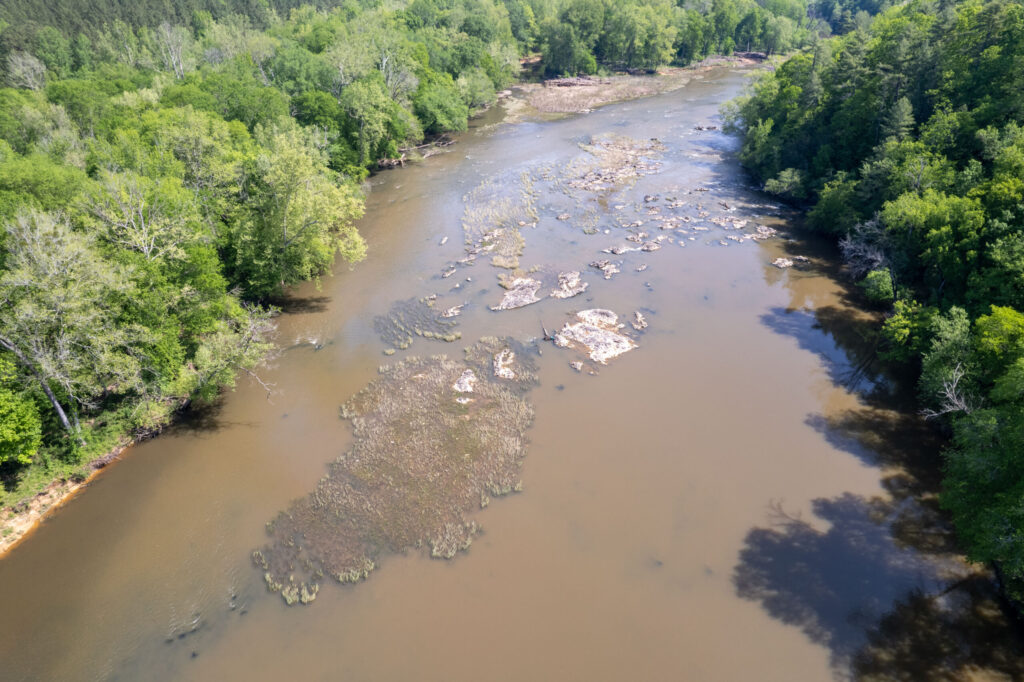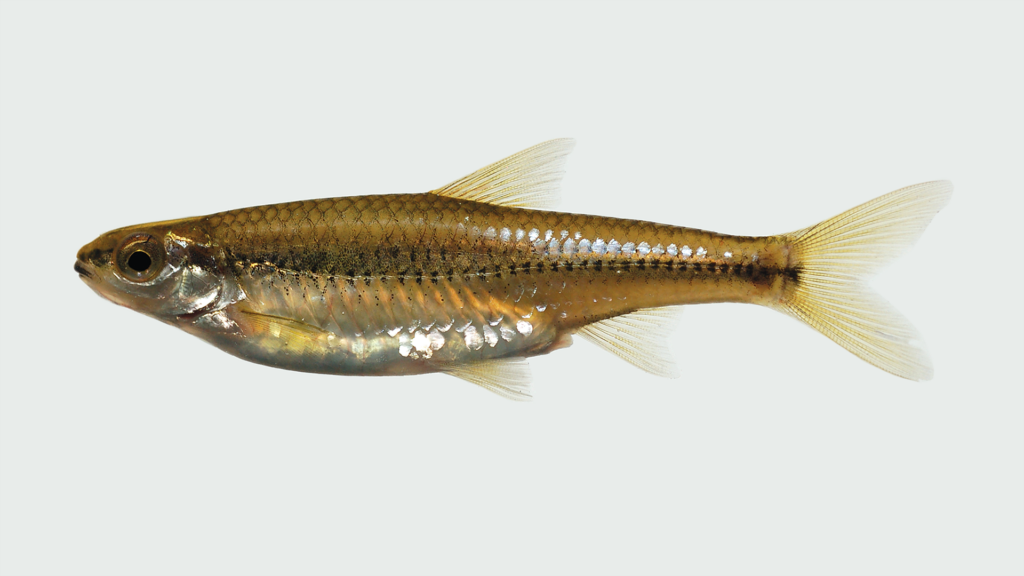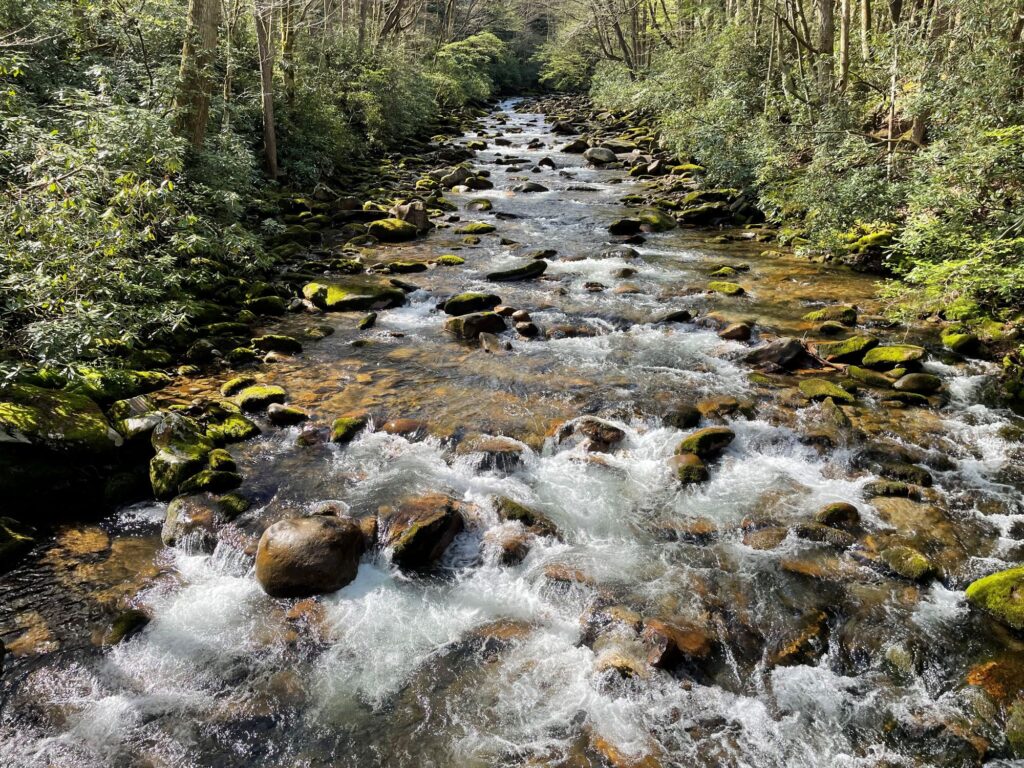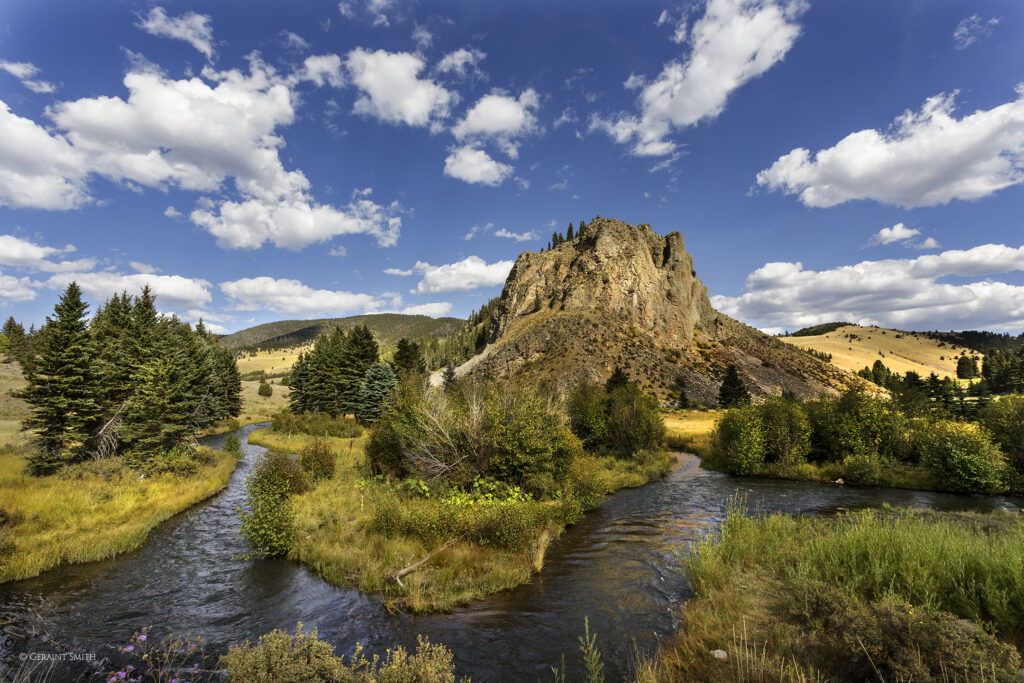Endangered but not Forgotten: The Tale of the Cape Fear Shiner

As an aquatic biologist, I often find myself thinking about what is going on below the water’s surface. There are numerous unique and amazing freshwater species that are plentiful in the Southeast, which is a hotspot for global biodiversity. But some species are rare and found only in remote areas after hours, days, months, or years of looking. Outfitted in waders or wetsuits our “day at the office” is more like a game of Eye-Spy, Where’s Waldo, or a needle in a haystack expedition for a glimpse of a specific fish, mussel, salamander, or crayfish.
Here in North Carolina, the endemic Cape Fear Shiner is one of those hard-to-find species, named for its shiny body that reflects the light. Endemic means that this fish is known only to be found in the Cape Fear River Basin and nowhere else in the world. The fish’s range is currently isolated to small sections of the Deep River, The Rocky River, and a few tributaries. Even within this range, the fish is challenging to find – trust me.

The Cape Fear Shiner is a small minnow – only about two inches long as a full-grown adult. As we enter Spring and the leaves burst into the brightest green and tulips pop up in our gardens, aquatic species also begin to show off their beauty. The male Cape Fear Shiner will intensify its golden coloration and the females will take on a silvery cast as they prepare to spawn. This is a great time to look for these beauties.
A day searching for this elusive fish involves scouting for the right habitat. Cape Fear Shiners are typically found in rocky riffles and shallow pools among water-loving plants, so we have to use a seine or dip nets to collect them. Stretching a seine (a large net with poles at either ends) across the most promising-looking habitat, our project team has to watch their footing on the slippery rocks and walk the long net upstream. Pulling up the seine net there can be 100 fish, and with a trained eye the team scans for a small fish with a pale yellow to golden coloration and a black band running the length of its body. Any fish matching this description are examined more closely for specific fin shape, lip coloration and number of spines along the fins. A positive identification is a victory and makes for a great field day but more often than not you can spend the day seining without a glimpse of the Cape Fear Shiner.

Let's stay in touch!
We’re hard at work in the Southeast for rivers and clean water. Sign up to get the most important news affecting your water and rivers delivered right to your inbox.
So why am I looking for the Cape Fear Shiner? Because I’m working to reconnect some of their habitat so this species will have a chance at survival, recovery, and just maybe be taken off the endangered species list.
Several aging dams along the Cape Fear River system like the High Falls dam create disconnection immediately below the designated critical habitat for the Cape Fear Shiner. Dams are barriers for aquatic species. They isolate populations, restrict the natural flow of genetic diversity and create smaller distinct populations. Because dams restrict movement, the species are at risk from singular events like droughts, floods or pollution spills. Additionally, the impoundment behind the dam changes a flowing system into a still pool. Essentially, habitats like riffles and small shallow pools are flooded into a deep and stagnant pool. Not an ideal habitat for the Shiner, and worse: they become easy prey for reservoir lovers like the invasive Flathead catfish.
As climate events such as storms and droughts happen more frequently in the Southeast and rivers experience warming and changes to flow, the rivers and the species within them are increasingly at risk. If rare and unique species such as the Cape Fear Shiner continue to disappear from our waterways we must take this as a warning. These species have a right to exist and thrive in a healthy system and also tell a story about the condition of our river systems and the problems that are impacting them.
So what can we do?
Protecting the Deep River and the species that rely on this system will take an effort that includes layers of conservation and restoration. One of these mechanisms is dam removal. Taking down a dam is the fastest, most efficient way to bring a river back to life. Dam removal is an important step to giving the Cape Fear Shiner species, and others, a chance at survival.
Free-flowing rivers promote healthy habitats for wildlife, improve water quality, open up fish passage, make recreation safer and foster climate resilience.
American Rivers is constantly working to identify opportunities for river and habitat restoration, and with your help, we will get there so that the Cape Fear Shiner can shine on.
Have you been one of the lucky people to spot a Cape Fear Shiner on this river? Comment below and tell us your Fish Story.




1 response to “Endangered but not Forgotten: The Tale of the Cape Fear Shiner”
I conducted a range-wide survey for CF shiners in 1984-86 (to support Endangered listing in 1987) and then assisted NC-WRC with more surveys in 2007. All known populations of the Cape Fear shiner are downstream of rapidly urbanizing areas in central NC. I think this species will most likely need to stay on the E-list permanently to ensure that development, land management, stormwater control, wastewater treatment, etc are conducted using rigorous strategies for downstream aquatic habitat protection. Some of these local governments are already resisting stricter wastewater effluent limits, and some of our state legislators have been limiting efforts to protect forested stream buffers. Business-as-usual development will continue to degrade CFS habitat and this species will not likely survive without special protection efforts.